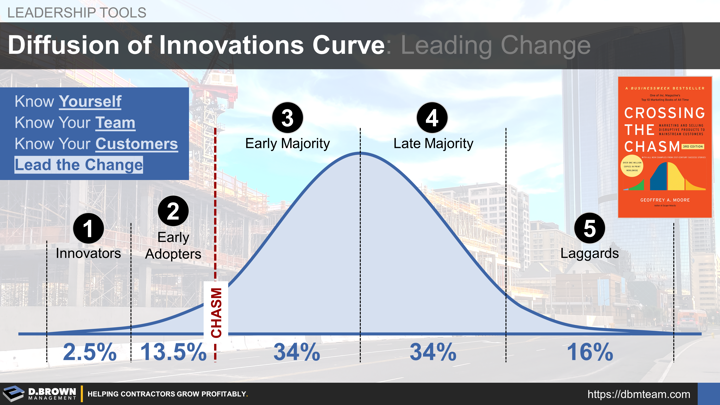The pace of change won’t slow down in the near future and no one can predict exactly what all those changes will be. The contractors that dominate tomorrow’s market will be those that have built strong capabilities for identifying opportunities or problems and then rapidly making lasting changes throughout the organization.
It is worth studying the “Diffusion of Innovations” theory which explores how, why, and at what rate new ideas and technology spread.
Basically any group is broken up into five broad categories:
- Innovators (2.5%): They seek out and eat change for breakfast! Sometimes too frequently.
- Early Adopters (13.5%): They will catch on very quickly. Not much to worry about except they will be frustrated by the adoption rate of the rest of the group.
- Early Majority (34%): This is where you start to build critical mass and if you can’t get to this group, then any lasting change will fail. Gordon Moore calls this “Crossing the Chasm” between Early Adopters and Early Majority - harder than it seems but critical.
- Late Majority (34%): Very pragmatic group that will only change when it is well proven by others.
- Laggards (16%): Won’t change until forced to.
Look at the markets you are in today and where you need to be in the future (strategy). What are the 3 most important changes required in those markets?
Look at your business model today and what you need it to be in the future. What are the 3 most important changes you need to make inside your company?
Have you mapped out where the people involved fall on the curve?
Do you know what you need to do with each one of them to move change forward? The decision to change is only the first step. Leading the change is the challenge.
An experienced and unbiased 3rd party can be extremely helpful as a sounding board to help you objectively evaluate yourself, your team, and your customers.
All relationships begin with a simple conversation. Please contact us to discuss the specifics of your situation.

